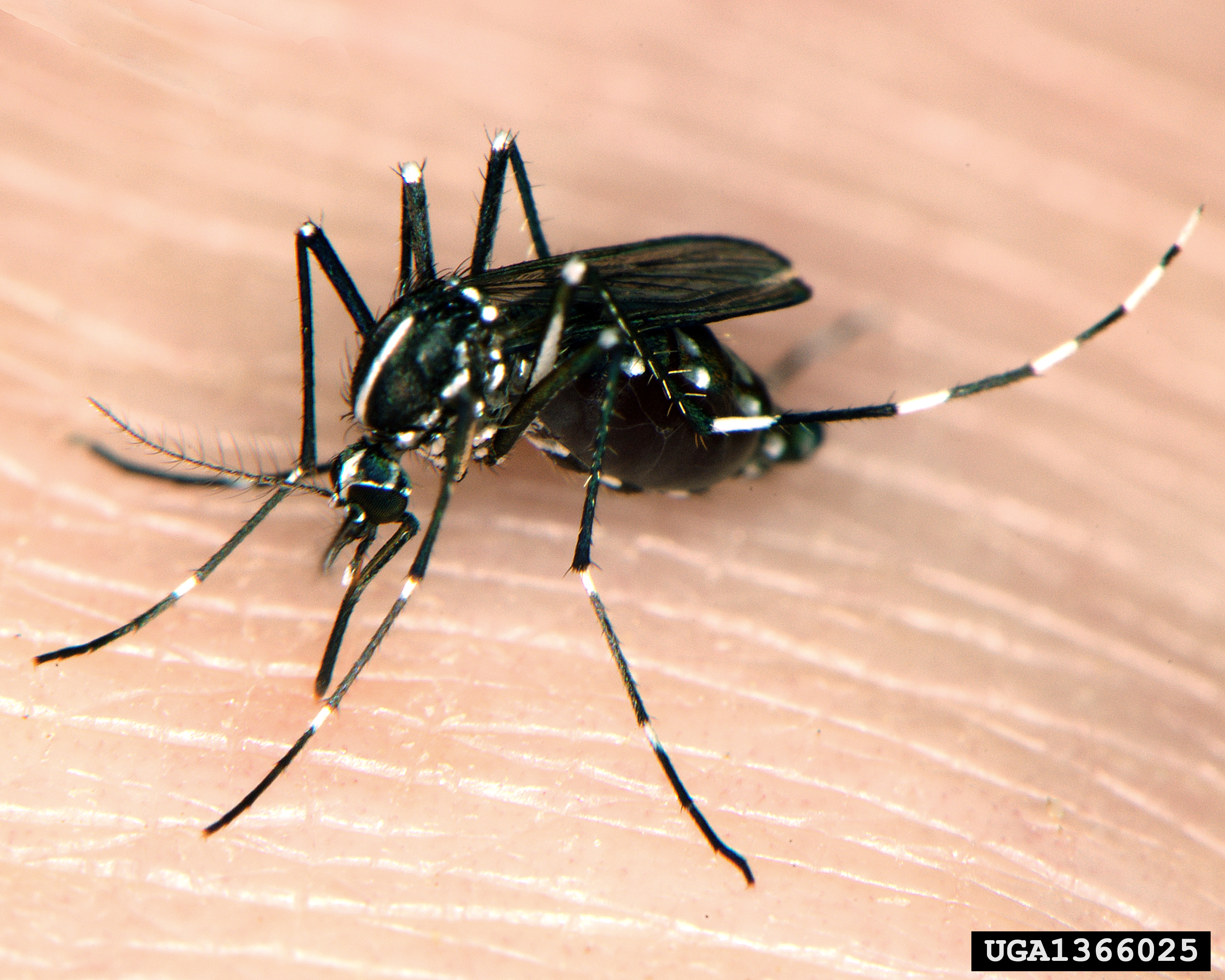Before it’s old news, I wanted to make it official. It’s Aedes (AID ees) season again in north Texas. Last weekend I spotted my first Aedes albopictus (Asian tiger mosquitoes) of the season. So from now until November, get used to having these pesky mosquitoes around.
Alex Wild, curator of the insect museum at the University of Texas in Austin (the OTHER Texas University) tweeted his first Aedes aegypti (yellow fever mosquito) of the season a month ago. Since then I’ve been tempting my local backyard mosquito population with my succulent, winter-white legs while doing yard work, to see when my first mosquito of the year would appear. Until last Saturday, there were no takers.
Generally the Aedes season in the Dallas area starts in mid- to late-April. So this week’s mosquitoes were right on schedule. Numbers generally peak in June, but remain high through October.

Aedes albopictus, the Asian tiger mosquito, along with its cousin the yellow fever mosquito, may be a Zika virus carrier this summer. Though markings on the thorax are different, both species have a dark body with white bands on the legs.
Despite my nerdy entomologist status, I’m not happy to see the return of these mosquitoes. For one thing, they are especially annoying biters. Their bites are itchy and their behavior is sneaky! One colleague recently referred to them as “ninja mosquitoes”. They slip in, take a quick meal, and slip out before you notice anything amiss. Three minutes later you’re itching like crazy. There’s little chance for revenge by slapping, because they’re so skittish and so fast–they’re usually gone before you know it. And no time or place is safe from these blood suckers. Both are daytime and evening biters, and both will readily come indoors.
Perhaps the worst thing about Aedes is their potential as disease carriers. Until now, neither mosquito was considered important health-wise in the U.S. Despite its ominous name, the yellow fever mosquito hasn’t had any yellow fever virus to transmit in the U.S. for many years (due to aggressive mosquito control measures and a vaccine). Neither was thought to be a significant vector of West Nile virus or the other encephalitid diseases that occasionally pop up in our country.
The arrival to the New World of chikungunya virus in 2013 and Zika in 2015 changes all that. The yellow fever mosquito, previously an important carrier of dengue fever, is almost certainly now also the principal vector (carrier) of both of these diseases in Latin America. While dengue fever occasionally flares up in south Texas and Florida, it’s never really gotten established this side of the Rio Grande. Even the easily-spread chikungunya virus has not found a home here.
Zika may be different. It’s highly contagious, and its health implications are more significant than chikungunya. Scientists also think that the Asian tiger mosquito may be competent to spread Zika in the U.S. This is especially alarming because of the tiger mosquito’s more northerly range and greater numerical abundance here. What’s not in question is that both mosquitoes are here in abundance, and stand ready to assume the role of disease carrier should the disease and right conditions come along.
These Aedes mosquitoes are not difficult to recognize. Both are small and fast for mosquitoes. Their entire body is covered with dark or black scales, but they have distinct white markings on the mouth parts, thorax and legs. If you see a small black mosquito with distinct white rings around the joints on the legs, you are probably looking at one of these two mosquitoes.
It’s difficult to completely eliminate the breeding sites of these mosquitoes because they take advantage of many small water reservoirs. The adult females are what are called “skip ovipositors”, meaning that they lay only a few eggs in any given breeding container, then move on to another site. This type of behavior makes these mosquitoes more difficult to control through breeding site elimination because when one site is eliminated, they move on in search of another.
I can testify as to the difficulty of eliminating breeding sites. I keep a close eye on any standing water in my backyard, but we still have high numbers of tiger mosquitoes in our yard every summer. Although these mosquitoes do not travel far from their breeding sites, they could easily be coming from a neighbor’s yard not as well patrolled as mine. Also, despite my diligence, I still continually find new spots with standing water after a rain. As in the memorable line from Jurassic Park, “Life (nature) will not be contained… [it] always finds a way.”
So if you’ve ignored the many warnings to wear mosquito repellent in recent years, and think you’re immune to diseases like Zika or West Nile virus, you might want to reconsider. We don’t know whether, or how bad, Zika will be in the U.S. this summer; but it has the potential to pop up anywhere, without warning. So far the only cases in Texas have been with travelers, or via sexual transmission, but the mosquito season is just getting started and Texas is a high risk state.
So keep those white legs covered, or else well protected with repellent, as you venture out in the garden this summer. Let’s not let this be the summer of Zika.
